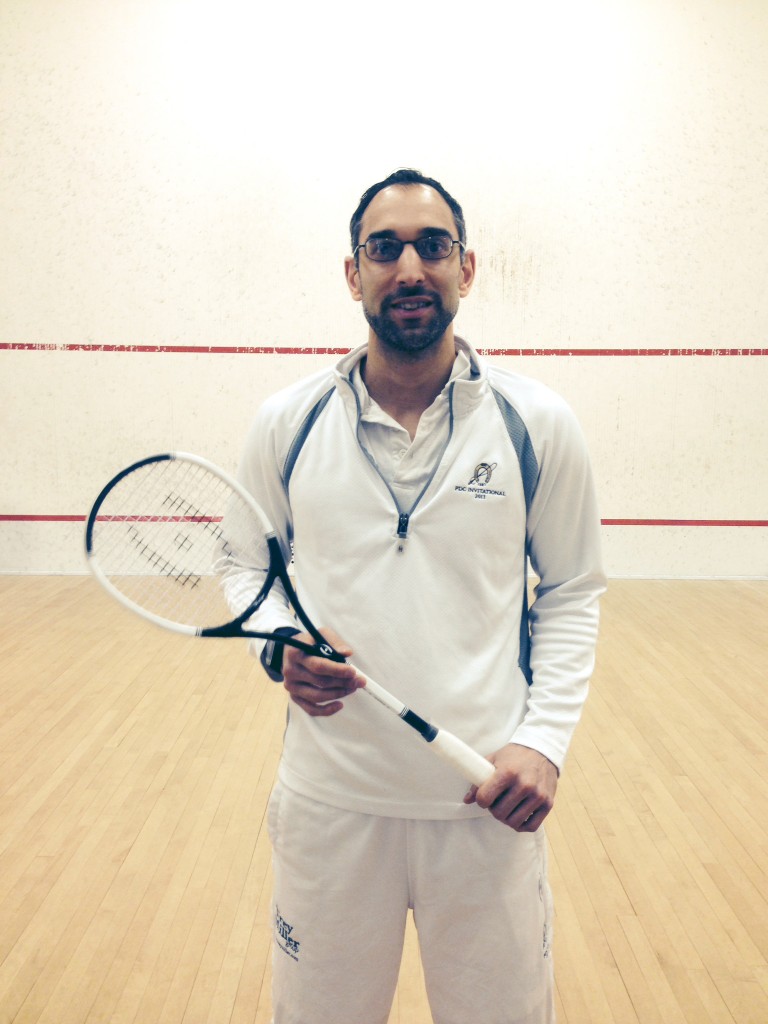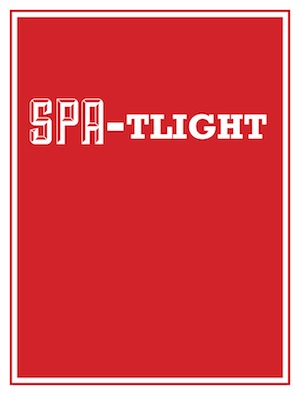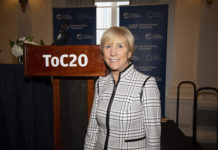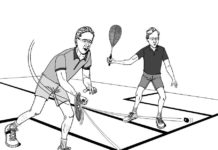
Carol Baglio, University Club of New York
When did you first start playing squash doubles?
I used to dabble around with doubles for fun as a junior in Canada but nothing too serious. I played the intercollegiate championships a couple of times while at Trinity in the early 2000s, but I didn’t really get serious about competing in doubles until I started working at the University Club of New York in 2008.
What do you think the biggest misconception of squash doubles is?
Most people don’t think doubles squash is very physically or psychologically demanding to succeed at a high level. This couldn’t be further from the truth.
Physically, doubles requires you to often hit harder than in singles and put more weight and more of your core into shots. Without a proper strength training program, highlighting your core and surrounding muscles, your body would break down quite quickly and likely lead to injury. For that reason I rely on a mix of yoga, pilates and cross-fit type exercises to maintain strength for doubles. For conditioning I ride the stationary bike and play a partner training game called “sides”—where you hit the ball to your opponent’s side of the court and he hits to your side of the court and you try to beat him/her that way.
Psychologically the dynamic is also much different in doubles compared to singles. You have not only yourself to think about to stay mentally focused and positive, but also your partner. You must be in tune with him or her and have good chemistry to achieve effective performance. You can take two of the best singles squash players and team them up and they could be a disaster on a doubles court. For that reason, choosing a partner wisely, with complementary assets to your own, is ideal.
Where do you see the growth opportunities for the sport?
Growth opportunities will depend on the quality of the product in conjunction with effective marketing. The current tour has expanded in prize money and number of events over the years through effective marketing and branding of our product. I think the next step is promoting the game at the junior level and getting juniors excited and getting into doubles at a younger age. This will increase the base number of players playing and, inevitably, raise the level of the product over time, which will attract more sites and more money. It is also our job as club pros to encourage the play of doubles squash and make sure members stay enthusiastic and excited about the sport so that they want to support it.
It seems that a lot of ex-collegiate players are dropping singles in favor of doubles. Why do you think that is?
I don’t necessarily think this is happening, although I do notice more ex-collegiate players adding doubles to their squash repertoire after college. This is probably due to accessibility as doubles is not really accessible at many colleges unless the college is near/in a major city. Since most ex-collegiate players still have the competitive drive after school, and since the clubs that they join after college have active doubles programs they inevitably get pulled into the excitement of the sport, which leads to more high-level doubles players on the whole.
Could Ramy Ashour make the transition to doubles and dominate the tour, or would there be a long adjustment period?
With doubles you never really know. Some people get there faster than others, and being dominant in singles doesn’t necessarily translate to dominance in doubles due to the partner aspect. While I have no doubt that he’d excel on the tour pretty quickly, part of what would determine dominance would be finding a partner to complement his strengths.





